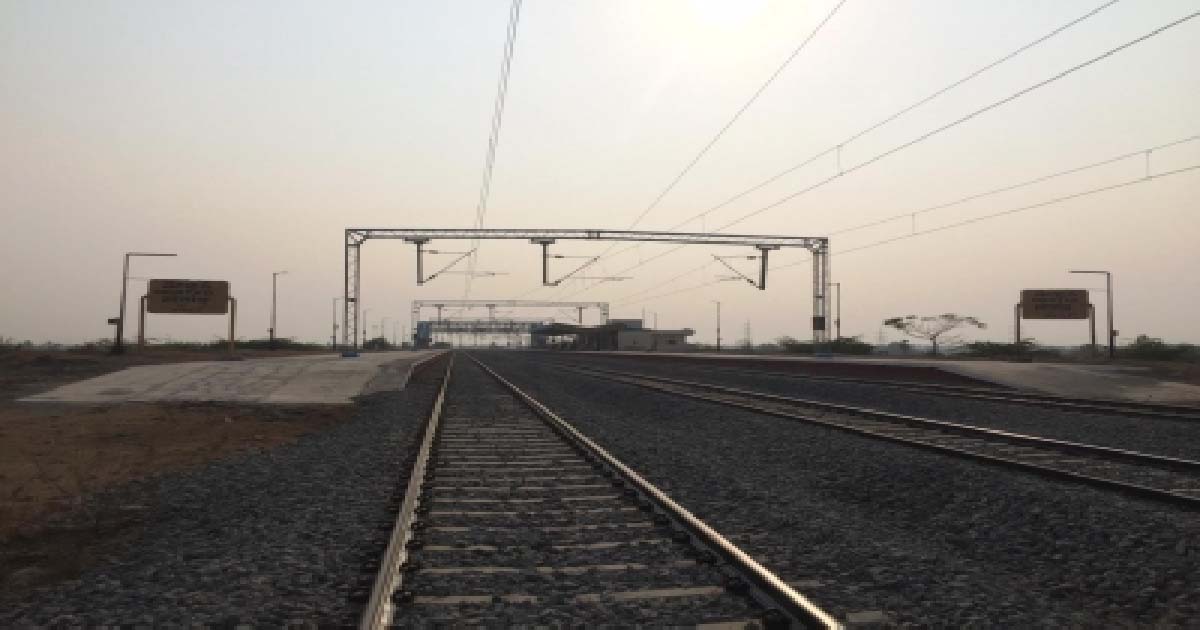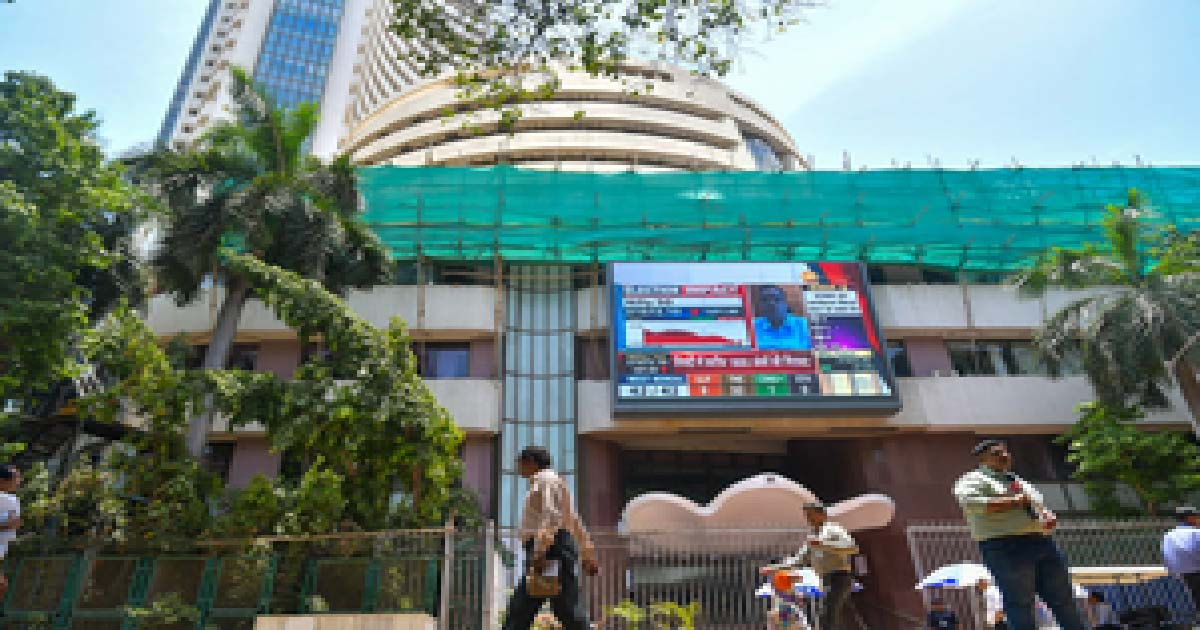Business
Most hospitals expect double-digit revenue growth in FY2022

The hospital sector witnessed a spike in Covid-19 occupancies during Q1 FY2022 in line with the active cases in India that touched an all-time high in May 2021, peaking at more than 4x the first wave peak.
The overall occupancy levels were supported by longer average length of stay for Covid patients even as localised lockdowns resulted in a sequential decline in non-Covid occupancies to a certain extent.
The blended occupancy of both Covid and non-Covid patients for ICRA sample set stood higher at 64.2 per cent in Q1 FY2022 (against 36.9 per cent in Q1 FY2021 and 58.8 per cent in Q4 FY2021), an ICRA report said.
Most multi-speciality hospitals derived 25-30 per cent of their Q1 FY2022 footfalls and revenues from Covid-19 treatments and vaccination drives. While the Y-o-Y revenue growth of 129 per cent in Q1 FY2022 for ICRA sample set was optically high aided by the low base, the Q-o-Q revenue growth was also healthy at 15 per cent.
However, higher share of revenues from Covid treatments resulted in a 4.2 per cent Q-o-Q contraction in the average revenue per occupied bed (ARPOB) in Q1 FY2022, even as complex nature of infections and higher proportion of patients requiring critical care treatment and oxygen support aided Y-o-Y growth of 8.7 per cent in ARPOB.
Operating leverage benefits in addition to incremental revenues and margins from vaccination drives and Covid tests resulted in an improvement in OPM for ICRA sample set to 19.3 per cent in Q1 FY2022 (against -9.3 per cent in Q1 FY2021 and 18.4 per cent in Q4 FY2021), the highest witnessed by the sample set in the last few years. This was despite absence of revenues from international patients.
Says Mythri Macherla, Assistant Vice President and Sector Head, ICRA, “While both in-patient (IPD) and out-patient (OPD) footfalls declined sequentially in Q1 FY2022 on account of Covid 2.0, footfalls were far higher than Q1 FY2021, wherein hospital operations were adversely impacted on account of the nationwide lockdown. Most hospitals have witnessed sequentially higher footfalls in July and August 2021 compared to Q1 FY2022 levels.”
“To assess the on-ground sentiments and understand the outlook for FY2022, ICRA conducted a survey of its rated hospital entities. Key findings suggest that with strong performance in Q1 FY2022 and expected benefits from pent-up demand for electives, respondents expect occupancies in FY2022 to be better than FY2020 levels and ARPOB to remain range-bound in FY2022 despite higher contribution from Covid. More than 2/3rd of the survey respondents expect double-digit growth in revenues in FY2022, and OPM to revive and be higher than FY2020 levels on the back of healthy improvement in occupancy levels.”
The net debt for ICRA sample set increased by Rs 350 crore as on June 30, 2021, compared to March 31, 2021 on account of advance payments for vaccine procurement and higher pharmacy stocking of Covid medicines.
In terms of capex, many companies in the sector have gone slow on greenfield expansion in the last few years as the focus was on improving returns on existing facilities.
Players are now looking at adding bed capacity within the existing infrastructure, and some of the larger players are actively scouting for inorganic growth opportunities. However, owing to the healthy cash generation and strong liquidity position, the interest coverage ratio is projected to improve.
The Government of India and the Reserve Bank of India have taken multiple measures to support the sector, including an on-tap liquidity window, dedicated ECLGS credit lines, etc. which is likely to support liquidity of industry players.
Business
38 Railways projects worth Rs 89,780 crore sanctioned in Maharashtra: Centre

New Delhi, Dec 20: A total of 38 railway projects (11 new lines, 2 gauge conversion and 25 doubling) of a total length of 5,098 kms and costing Rs 89,780 crore have been sanctioned in Maharashtra (as on April 1, 2025), the government said on Saturday.
During the last three fiscals — 2022-23, 2023-24, 2024-25 and the current financial year 2025-26 — 98 surveys (29 New Line, 2 Gauge Conversion and 67 Doubling) of total length 8,603 km falling fully/partly in the state of Maharashtra, have been sanctioned, it said.
“Further, construction works on the flagship High-Speed Bullet Train project have gathered momentum in Maharashtra. Now 100 per cent of land acquisition has been completed. Works on bridges, aqueducts, etc. have been taken up,” the Railways Ministry said in a statement.
In addition, platform extension work at 34 stations to accommodate 15-car EMUs has been taken up.
To improve the capacity of the rail network in the Mumbai suburban area, the Mumbai Urban Transport Project (MUTP)-II costing Rs 8,087 crore, MUTP-III costing Rs 10,947 crore, and MUTP-IIIA costing Rs 33,690 crore have been sanctioned.
To enhance passenger carrying capacity, 238 rakes of 12 cars each with doors have been sanctioned under MUTP-III and IIIA at a cost of Rs 19,293 crore. The process for the procurement of these rakes has been taken up.
With Western DFC also passing through Maharashtra, as about 178 route km of it or about 12 per cent of the overall route length, falling in the state, the ministry said that “about 76 km of this project from New Gholvad to New Vaitarna in Maharashtra has already been commissioned. Balance works have been taken up. Connectivity of WDFC to JNPT will boost the capacity to handle cargo and container traffic from the port to Delhi NCR”.
Presently, about 120 originating Mail/Express trains and about 3,200 suburban trains are handled daily in the Mumbai area.
Business
Indian indices end week in bullish tone over positive global cues

Mumbai, Dec 20: Indian equity benchmarks closed on a strong note this week, snapping a four-day losing streak amid positive global cues stemming from US inflation data.
The market ended the week in a bullish tone with Nifty surging 0.18 per cent during the week and 0.58 per cent on the last trading day to 25,966, after a softer US CPI print boosted expectations of a milder Fed stance.
At close, the Sensex was up 447.55 points or 0.53 per cent at 84,929.
Indian equities were traded in a cautious tone for most of the week, weighed down by persistent FII outflows, rupee depreciation, and heightened global uncertainties.
Further, early sessions also saw pressure from rising Japanese bond yields and expectations of Bank of Japan (BoJ) tightening, which amplified risk-off sentiment across emerging markets.
Bargain hunting and lower crude prices helped large caps drive a late rebound, trimming most of the week’s losses, market watchers said.
Broader indices also rose marginally during the week, with the Nifty Midcap100 up 0.04 per cent, while Nifty Smallcap100 was unchanged during the week. It gained 1.34 per cent at the close.
On the sectoral front, all sectors traded with a positive bias. Major contributions came from Nifty Realty, Auto, Healthcare, and Chemicals, while other sectors also posted modest gains.
Nifty has 26,200-26,300 as stiff resistance levels while 25,700–25,800 levels will act as support zone, they added.
Analysts said markets will likely maintain a cautiously positive bias in near future but remain highly sensitive to global cues.
Key drivers going forward include comments from the global central banks for the 2026 policy trajectory. While sentiment remains constructive, near-term volatility may persist amid uncertainty over trade deal timelines and the Indian rupee stability, they added.
Business
Nifty to touch 29,094 in 12 months supported by durable earnings, strong macro backdrop

New Delhi, Dec 19: India’s benchmark index Nifty is expected to touch 29,094 in one year based on long‑term valuation averages and earnings durability, a report said on Friday.
Wealth management firm PL Wealth said in the report that India enters the end of 2025 from a position of relative macro strength with record‑low inflation, a dovish monetary stance, resilient domestic demand and improved corporate earnings visibility.
“In the near term, large-cap stocks remain preferred due to their earnings stability and strong balance sheets, while selective exposure to high-quality mid-cap names is being added as visibility improves,” the wealth management firm cited its strategy.
Over the next 6 to 24 months, the earnings cycle is expected to broaden across consumption, financials, capex-linked sectors and select industrials, supported by benign inflation, lower interest rates and sustained domestic liquidity.
“India’s current macro configuration is among the most constructive we have seen in over a decade,” said Inderbir Singh Jolly, CEO, PL Wealth Management.
While global uncertainties will continue to create short-term volatility, India’s structural strengths—policy reform, financialisaton of savings and improving corporate balance sheets—position it well for sustained long-term growth, Inderbir added.
RBI’s 25 basis‑point cut to a 5.25 per cent policy repo rate lowered its CPI inflation projections and upgraded GDP growth estimates, signalling confidence in the sustainability of domestic demand, the report said.
The firm also noted FY26 GDP growth projection of 7.3 per cent underpinned by robust infrastructure spending, resilient consumption and key policy measures such as GST rationalisation and income-tax cuts.
The FY26 September quarter earnings season delivered broad-based strength, with several sectors—including hospitals, capital goods, cement, electronics manufacturing services, ports, NBFCs and telecom—reporting double-digit growth in EBITDA and profits.
The firm noted that Nifty earnings per share estimates for FY26–FY28 imply an earnings CAGR of nearly 14 per cent. Domestic institutional investors have anchored markets with record net inflows of over Rs 6.8 trillion year‑to‑date.
-

 Crime3 years ago
Crime3 years agoClass 10 student jumps to death in Jaipur
-

 Maharashtra1 year ago
Maharashtra1 year agoMumbai Local Train Update: Central Railway’s New Timetable Comes Into Effect; Check Full List Of Revised Timings & Stations
-

 Maharashtra1 year ago
Maharashtra1 year agoMumbai To Go Toll-Free Tonight! Maharashtra Govt Announces Complete Toll Waiver For Light Motor Vehicles At All 5 Entry Points Of City
-

 Maharashtra1 year ago
Maharashtra1 year agoFalse photo of Imtiaz Jaleel’s rally, exposing the fooling conspiracy
-

 National News1 year ago
National News1 year agoMinistry of Railways rolls out Special Drive 4.0 with focus on digitisation, cleanliness, inclusiveness and grievance redressal
-

 Maharashtra1 year ago
Maharashtra1 year agoMaharashtra Elections 2024: Mumbai Metro & BEST Services Extended Till Midnight On Voting Day
-

 National News1 year ago
National News1 year agoJ&K: 4 Jawans Killed, 28 Injured After Bus Carrying BSF Personnel For Poll Duty Falls Into Gorge In Budgam; Terrifying Visuals Surface
-

 Crime1 year ago
Crime1 year agoBaba Siddique Murder: Mumbai Police Unable To Get Lawrence Bishnoi Custody Due To Home Ministry Order, Says Report












